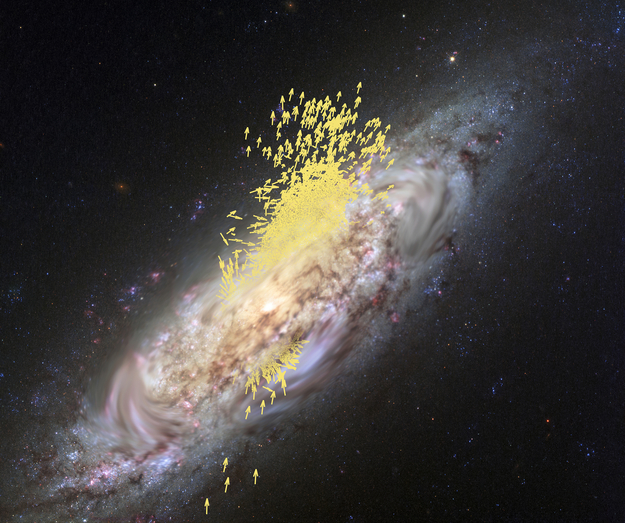The Milky Way and Andromeda are on a collision course, a galactic smash-up of gargantuan proportions. But there’s not much reason why you should worry about this. For starters, it’s likely to happen some 4.5 billion years in the future — and also, as a new study found, our galaxy has merged with others before.
In fact, around 10 billion years ago with a dwarf galaxy called Gaia-Sausage-Enceladus (GSE) – one of the most recent collisions.

Credit: ESA (artist’s impression and composition); Koppelman, Villalobos and Helmi (simulation); NASA/ESA/Hubble (galaxy image), CC BY-SA 3.0 IGO
The GSE was discovered with the European Space Agency (ESA)’s Gaia observatory. In the 22 first months of observations, Gaia found a distribution of 30,000 stars in a trajectory opposite to most stars. Their path in the galaxy resembles a sausage (hence the ‘Sausage’ in the name) and their brightness indicates they belong to a particular stellar population.
Recently, a team simulated the collision between the galaxies and tried to understand if it was head-on or did it involve a decaying orbit. The scientists based their simulation on both Gaia and Multiple Mirror Telescope (MMT) Observatory of the Smithsonian Institution and the University of Arizona. The idea is to create a simulation as close to reality as possible.
In the results, the team successfully obtained the structure present today and how the collision formed. Their analysis matches with the trajectories and composition of the stars that exist today. GSE was approaching the Milky Way in opposite direction from our galaxy’s rotation until the dwarf galaxy merged with its bigger neighbor. In other words, judging by these trajectories, the Milky Way and GSE have collided in the past.

This study contributes to more information about the history of the Milky Way. We now have an idea of how our galaxy became the way it is today. Merging with Gaia-Sausage-Enceladus had about 500 million stars and the event provided 20% of our galaxies’ dark matter and 50% of its stellar halo – part of a galaxy that contains stars beyond the primary distribution.
The study was published in The Astrophysical Journal.









